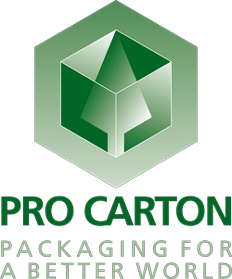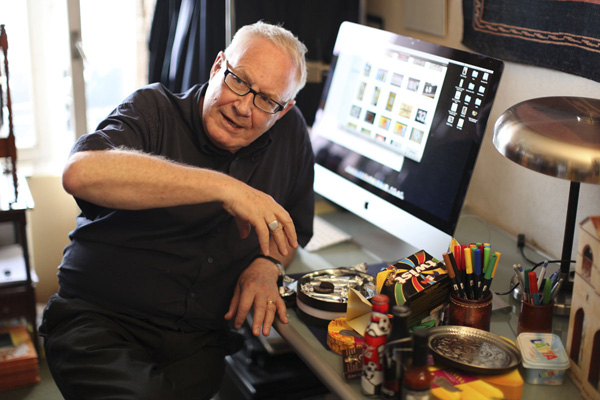Keep it simple!
3 July 2017
Everyone who has ever tried to simply design something, knows how difficult this can be. In his new book on packaging design, “Who Sells What to Whom“, Lars Wallentin - top-designer at Nestlé for many years - shares his tips on how to do it. Pro Carton interviewed him.
What makes for great design in your opinion?
Great design is honest: Great design is always transparent, easily understood and not cheating or hiding defects or weaknesses. An honestly designed product does not claim features it does not have.
Great design is concerned with the environment: Great design doesn’t use more energy than necessary, uses as little raw material as possible, can be recycled etc. In other words, great design is not waste.
Great design is consistent to the last detail: Thoroughness and accuracy are part of great design. I don’t know who coined the words “God is in the details”, but that is what design is all about.
My advice to “simplify, amplify and repeat” has never been more relevant than today when marketers believe that everything has to appear on the front of the pack. In order to stand out, great communication packaging has to exaggerate something on the front panel. This can obviously only be done if other messages are reduced or simplified by relegating them to the back panel.
So how can companies achieve this?
There are basically 2 ways of doing this: Dare to be different or exaggerate! And make it unusually big, which is not always a matter of size but also of communication.
To be a winner is a matter of building high expectations through consistent and creative communication over a long period. The better we express the value of a food or drink product through appetite appeal, illustrations, convincing copy, strong branding and easy understandable virtues, the more we stimulate the consumer to purchase our product.
Do you think cartons will be the packaging of the future?
Cartons will always be the no. 1 material as people understand that they come from a renewable material, they understand that trees grow! That they also absorb CO2 maybe too difficult to explain! People do not understand recycling plastic, which is, in my opinion, not a very intelligent idea anyway because it uses too much energy for a light material. But people understand that if you recycle paper there will be new paper.
What is your advice for those who have modest budgets?
When you are selling a niche product or a product which you know will be bought only by a small number of consumers and you have no money for advertising or other media: what is the solution? It is of course creative packaging, pack designs that stand out. When no money is available for other media, spend it on packaging!
I remember that once the then CEO of Nestlé, Mr Peter Brabeck, told us that packaging is the most economical advertising medium, enormously underutilised, with virtually no wastage and almost cost free. How right he was! If we design the pack and the communication with a big idea in mind or a clear concept, we do very efficient marketing.
What would you improve with today’s packaging?
Nowadays packaging is constantly being improved, be it on the logistical, technical, material or ecological side. We also see more unique designs and more innovative solutions. However, if we look at the way packaging communicates, what selling messages one can find or how supportive the back side panel texts and illustrations are, we see little or no progress which I think is due to a number of reasons. The companies are often too rule-bound and brand managers have difficulty in understanding that sometimes “less is more”. Most designers forget the sales role of packaging, that is how to maximise the RTB (Reason to believe) or USP (Unique Selling Proposition). Also, I question whether designers and marketers store-check enough. I doubt it. We must learn from other product categories.
We are in a world of over-information and brand managers often have not enough experience to concentrate on the essential in each media. The essential on the pack can be appetite appeal, on POS material it can be a selling text and in advertising it can be the brand. Today, there is a tendency to put everything on the pack and then duplicate it in other media.
When it comes to readability, packs need to optimise the typography. Great typography creates interest, it makes reading easy and it has a layout that highlights what is important and useful. I doubt package designers see it that way, as many back panels are very boring and difficult to read!
To be top-of-mind, to be noticed, to stand out, you have to change something in your design now and then. Toblerone, for instance, does it constantly with their brand logotype, and so does Google!
How can we achieve better design?
The more teamwork, the more knowledge will lead to more creativity. And we should involve retailers in that process. But we must think multi-material and not mono-material, for example cardboard plus plastic for stability, easy opening and visibility. In the first meeting, there should be the designer, the manufacturer and the brand manager, the more people you have, the more creative you can be!
Why do so many consumers have a negative opinion about packaging?
There are mainly 4 reasons:
- too difficult to open;
- text is too small, practically unreadable;
- over packaging – too much material or too big a pack in relation to the product/content;
- no handle for heavy packs and other ergonomical weaknesses such as ‘slippery’ (unstable) plastic bottles in the bathroom.




